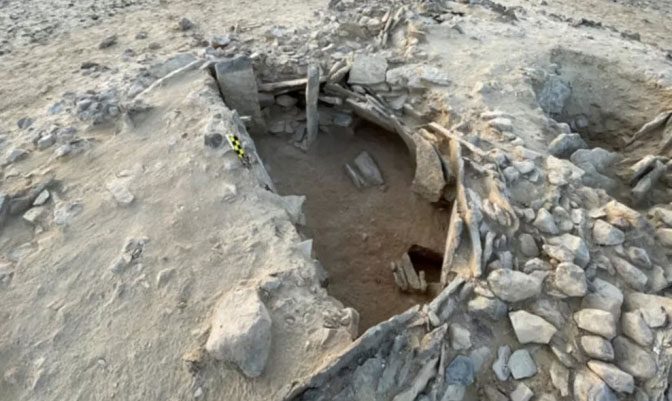Archaeologists Discover Remains of Dozens Buried in an Ancient Stone Tomb in Oman, Arabian Peninsula.
The stone tomb in Al Wusta Province is one of the oldest man-made structures ever discovered in Oman, according to a report by Live Science on May 8. The burial site is located in a rocky desert near the coastline. “No tombs from the Bronze Age or earlier are known in this area. It is completely unique,” said Alžběta Danielisová, an archaeologist at the Czech Academy of Sciences’ Institute of Archaeology.

Ancient tomb in Al Wusta Province, Oman, dating back 6,600 – 7,000 years. (Photo: Roman Garba/Alžběta Danielisová/Czech Academy of Sciences).
Danielisová leads the excavation efforts at the tomb. The burial site was discovered about 10 years ago through satellite imagery. Archaeologists believe that it dates back to between 5000 and 4600 B.C.
The walls of the tomb are made from rows of thin slabs of stone, known as ashlar, featuring two circular burial chambers inside, divided into individual compartments. The entire tomb is covered by an ashlar roof, although it has partially collapsed, possibly due to the seasonal rains that occur annually.
Scientists found several “clusters of bones” in the burial chambers, indicating that the deceased were allowed to decompose before being interred in the tomb. Their skulls were placed near the outer wall, with long bone fragments oriented toward the center of the room.
The team of experts also discovered similar remains in a smaller tomb adjacent to the main one. They believe this smaller tomb was constructed slightly later. Danielisová noted that there is evidence suggesting the deceased were buried at different times.
In the coming months, the research team will conduct anthropological and biochemical assessments of the remains to gain further insights into the diet, mobility, and demographics of those buried within the tomb. The researchers also hope to find an ancient settlement nearby where these individuals may have once lived.


















































